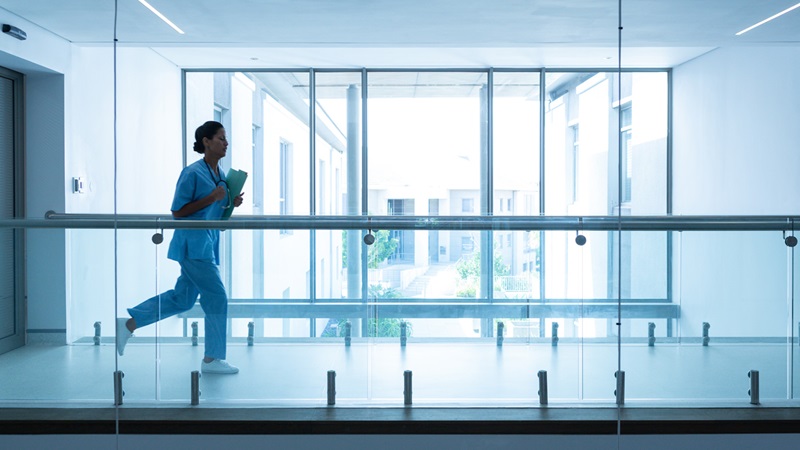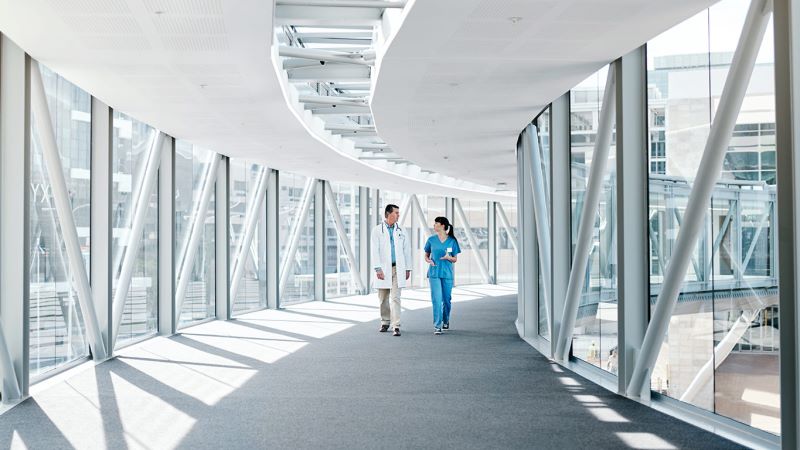Need for speed: Transforming healthcare delivery
In today's evolving healthcare landscape, speed isn't just a luxury; it's a necessity. As our Delivering Hospital 2050 report highlights, healthcare organisations must adapt to meet the escalating demands of their global communities.
But, the complexity of hospital construction presents significant challenges, from navigating environmental obstacles to managing diverse stakeholder interests and political pressures. The prolonged timeline of concept to construction to operation, often spanning over a decade, is simply unsustainable and cannot remain the norm.
The increasing demand for healthcare services, coupled with the urgent need to upgrade hospital infrastructure, presents a pressing challenge for healthcare leaders. A robust healthcare sector translates to a healthier population, with lower instances of long-term illnesses that can impede productivity and economic output per person.
Realising these benefits relies upon robust project delivery and the ability to take advantage of fresh approaches and the latest technology. The ability to deliver effectively and react quickly to changing environments enables healthcare companies to respond swiftly to fresh challenges and evolving needs.
A global approach to local delivery
Hospitals are complex buildings that need to be tailored towards both local and national needs. There are intricate webs of political, social and legal stakeholders interested and invested in any hospital project.
Poor relationships with these stakeholders can lead to issues that significantly slow down hospital delivery, with a lack of balance between responding to issues against getting on with the job.
It is therefore essential that hospital leaders choose to work with mature, experienced partners who understand these kinds of environments and can deliver effectively within them. Having delivered major programmes before, they can better advise on managing a diverse range of interested parties while offering experience from working around the world to benefit overall project delivery.
Making use of global best practice
Global experience enables a strong delivery partner to leverage cutting edge technologies which can expedite hospital construction. This means moving away from traditional approaches to hospital design and construction towards more innovative solutions such as Building Information Modelling (BIM) and Modern Methods of Construction (MMC).
By integrating BIM and MMC as part of delivery, hospital developments can cut programmes by up to 50%, paving the way for more efficient and effective healthcare infrastructure.
BIM offers a transformative platform, providing a 3D digital replica of the hospital that allows for thorough stress testing during the design phase. This ensures alignment with technological advancements like AI and robotics, enabling the digitisation of future hospitals for more effective patient care, alongside fostering valuable stakeholder engagement. Hospital staff and clinicians can better understand and therefore influence the structure and layout of a future space, ultimately driving better patient outcomes. Furthermore, digitisation through BIM facilitates seamless collaboration among construction teams, optimising construction sequencing and supply chain management.
MMC emphasises off-site construction, building structures in discrete modules that are assembled onsite to create the completed hospital faster than traditional construction. Modules can be repeatable, replicated where appropriate, and combined in multiple ways to meet the needs of a particular wing of the hospital.
MMC can drive change on some of the biggest challenges in designing and building hospitals, such as modular MEP. We are providing this as part of our delivery of 40 Leadenhall, a new 900,000 sq ft neighbourhood crafted for London's pioneering businesses. Our MEP modules feature QR codes that allow for tagging and tracking using a BIM model. Once the building is in operation, its maintenance team will be able to scan those codes and see all the data collected during design and construction.
As healthcare systems strive to meet the demands of the future, the imperative of speed in healthcare delivery underscores the necessity of embracing cutting-edge technologies to build resilient infrastructure.
Ushering in hospitals of the future
By leveraging technologies such as BIM, we have successfully accelerated the construction process and delivered Chulucanas Hospital well ahead of traditional timelines. What once took between seven to nine years in Peru was accomplished in just three, significantly enhancing the capacity of healthcare systems to meet the growing demands of communities.
In today's rapidly changing healthcare landscape, the ability to swiftly deploy patient-centric infrastructure in response to emerging challenges can mean the difference between serving your communities and falling behind.
It is therefore essential that healthcare providers work with organisations that can enable this focus on speed of delivery. By entrusting a partner that can adeptly balance project complexity with the ability to execute, leaders can adopt a systematic approach to addressing the needs of future healthcare.
For more information about healthcare delivery, please read Delivering Hospital 2050.












